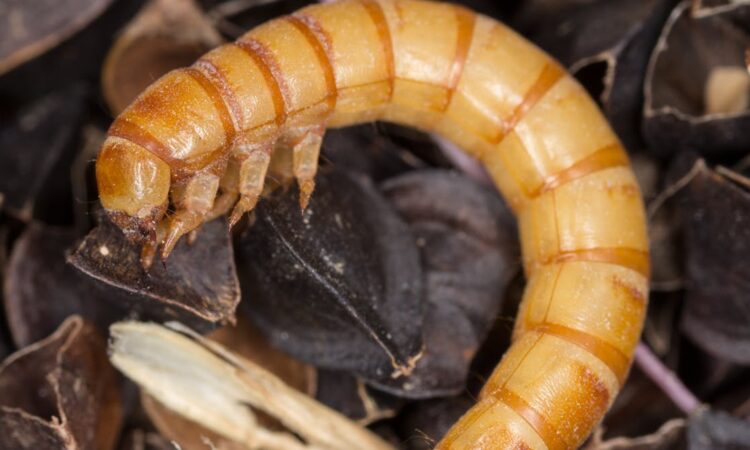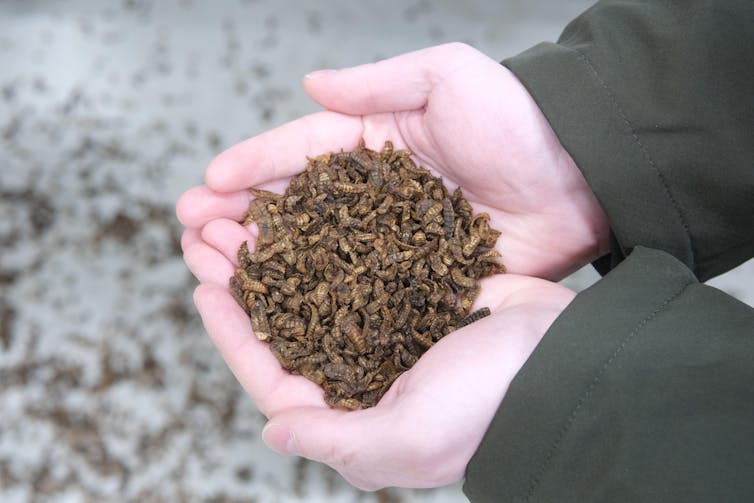
Like it or not, there are lots of good arguments for eating insects – both in animal feeds and on human plates. You can farm them with much less land, water and feed than the likes of cows and sheep. Their greenhouse gas emissions are significantly lower, while they are also high in protein and essential minerals.
Eating insects makes all the more sense at a time when the global population is still expanding and demand for meat is on the up and up. Yet particularly in the UK, the industry has been held back by regulators dragging their feet.
So what’s the problem and what needs to happen in the years ahead?
The insect boom
The biggest market in the west at present is in processed insect products like crickets, black soldier flies and mealworms for animal feeds. As well as the nutritional and environmental benefits, they also make farm animals bulkier pound for pound than traditional feeds like soya. Admittedly, soya feed is currently cheaper, though not necessarily when you consider hidden costs like deforestation and food miles.
The global market for insect protein was worth around US$540 million (about £432 million) in 2022. According to one recent forecast it will hit US$1.4 billion by 2029, with Europe making up around a fifth of the market.
Europe produced fewer than 2,000 metric tons of insect protein in 2018, but is expected to reach a staggering 1.2 million tons by 2025, with France’s Ynsect having set up the largest insect farm in the world. This is on the back of EU rule changes that have made it possible for farmers to include insects in feeds for pigs, poultry and fish farms.
The UK makes up nearly one tenth of European demand for insect protein, at least according to 2018 data (I haven’t been able to source anything more recent). The UK rules for using insects in animal feeds are mainly based on EU regulations, but we’ve been seeing some divergence since Brexit that could well hinder the growth of the market.
In 2017 the EU and UK permitted seven species of insect to be used as feeds in fish farms for the first time. These included black soldier flies, common houseflies and several species of mealworms and crickets. Black soldier flies and to a lesser extent yellow mealworms are now being farmed in various locations in the UK, from London to Edinburgh.
Yet more recent EU changes have not been mirrored in the UK. Silkworms were added to the EU list in 2021, but are not yet permitted in the UK. The EU move the same year to permit processed insect protein to be fed to pigs and poultry intended for human consumption has not been followed in the UK either. This means that farmers’ only option if they want to use insects is to feed live ones to their animals.
According to the World Wildlife Fund For Nature (WWF), deregulating the UK market could be transformational. UK farms used just 21,000 tons of insect meal in 2021 for fish farms, pigs and poultry, nearly 6,000 tons of which was from insects reared in the UK. In contrast, livestock alone are fed around 2.5 million tons of soya each year.
With deregulation, the WWF thinks that demand for insect protein by 2050 could be well over 500,000 tons, with half supplied within the country. This would cut British reliance on soybean imports by about 20%, reducing deforestation in places like Latin America. It would also potentially create job opportunities in the UK.
My research
In my recent research I talked to ten insect-related experts in the UK about the state of play, including farmers, feed producers and academic researchers. In particular, feeding live insects to animals is not appealing to many farmers. It’s more inconvenient and time-consuming, and costs more because farmers have to purchase insect eggs or larvae – plus live insects have a short shelf-life compared to traditional animal feeds.
In relation to the costs involved in insect farms, some interviewees said the controlled environments required in the UK were expensive in terms of energy requirements and labour. Others said insect production could be energy efficient with the right equipment. Interviewees also reported it is hard to find information on insect farming, the latest regulations and so on.
In addition, interviewees saw a need to educate both consumers and farmers. This doesn’t necessarily have to be an uphill struggle. In Scotland, for instance, one 2017 study of 180 people found that over 80% were more than happy for insects to be included in feeds for salmon.

DPA Picture Alliance
Finally, interviews highlighted some under-researched areas, such as the welfare of the insects being farmed and the effect on the animals being fed them. For instance, sceptics question whether rearing many thousands of insects on waste might introduce new pathogens into the food chain.
Another area needing further exploration is feeding insect protein to cows and sheep. Some say this would be completely unworkable for the digestive systems of herbivores, though it has been argued that it could help reduce the amount of methane they produce.
The opportunity
Despite the challenges, my interviewees saw the potential for insects to help with the circular economy by rearing them on food waste. Other positives included the fact that the gut microbiome of black soldier-fly larvae can be beneficial to hens’ health.
There was also some discussion about the potential to broaden into other markets. For instance, insect excrement (frass) can be used as a premium fertiliser. There is also potential in areas such as pet foods and human protein supplements.
As for humans eating insects, many people are open to the idea, but the law has been somewhat unclear since Brexit. The Food Standards Agency has temporarily permitted insects to be sold for human consumption pending a more long-term decision due by December. A green light would be a very useful step forward and bring the UK into line with the EU.






